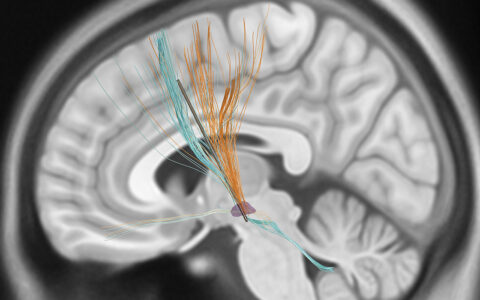Studies of the connections between restless legs syndrome (RLS) and cardiovascular disease are providing strong evidence that pharmaceutical interventions to alleviate RLS symptoms can also protect patients from certain heart and circulatory risks.
An autopsy study, coauthored by Arthur Walters, M.D., a professor of neurology in the Division of Sleep Medicine at Vanderbilt University Medical Center, confirmed prior MRI studies that showed increased cerebral microvascular disease – or pre-stroke conditions – in the brains of RLS patients. In a second, much larger study, Walters put treatments for restless legs to the test to assess their impact on cardiovascular risk.
“We’ve shown, in research that involved about 170,000 patients, that patients who underwent treatment for RLS had lower risk for cardiovascular diseases as compared to patients who took no medication for RLS,” Walters said. “This is the first study to show how important RLS treatment is to protecting against all forms of cardiovascular disease and stroke.”
Observation Reaffirms MRI Findings
For the autopsy study, the researchers took 10 microvascular injury samples from the precentral gyrus in five patients who had RLS. Nine others served as controls. None of the patients had a prior history of stroke or neurologic insults.
“This is the first study to show how important RLS treatment is to protecting against all forms of cardiovascular disease and stroke.”
“Patients with RLS had statistically significantly more silent microvascular disease in the brain than controls, compatible with previous MRI studies and with studies showing a link between RLS and hypertension, clinical stroke, and cardiovascular disease,” the authors wrote.
There was no correlation between the severity or duration of a person’s RLS and the extent of the microvascular lesions in their brain, the authors also noted.
RLS Treatment Offers Wider Protection
For the larger study, the researchers used data from 169,393 patients obtained from a commercial insurance database between January 1, 2006, and December 31, 2014. All participants were free of CVD before January 1, 2009.
“If RLS is a risk factor for cardiovascular illness, and it is, treating the RLS does lower the risks.”
“Our team followed the participants forward in time to see whether or not they developed several different forms of cardiovascular disease,” Walters said. These included myocardial infarction, angina, stroke, atrial fibrillation and heart failure.
The research group compared the cardiovascular history of a control group without RLS with that of patients who received pharmacological treatment for their restless legs and RLS patients who did not receive treatment, Walters explained. “Ultimately, the controls had the lowest risk of stroke and other forms of cardiovascular disease; treated RLS patients had intermediate risk, and untreated RLS patients had the highest risk,” Walters said.
Compared to the control group patients without RLS, the adjusted hazard ratios for future cardiovascular disease were 1.26 for the RLS patients who received treatment and 1.53 for the RLS patients who did not receive treatment.
Various Treatments Confer Protection
“It was exciting that the treatment of RLS with RLS medications lowered the cardiovascular risk compared to the non-treated patients,” Walters said. “This suggests that if RLS is a risk factor for cardiovascular illness, and it is, treating the RLS does lower the risks.”
“But more awareness is still needed. More needs to be done, and this link to cardiovascular disease raises its profile.”
Treatments offering protection included dopaminergics, anticonvulsants, benzodiazepines and opiates, he noted. However, treatment with ergot-dopamine agonists did not decrease cardiovascular risk.
Restless Nights Lead to Low Functioning Days
Often striking at night, RLS causes leg discomfort or pains, Walters explained. Patients feel urges to constantly move their legs, struggling to fall or stay asleep. Daytime functioning and relationships can suffer because of the resulting exhaustion; associated problems, including depression and anxiety, often result.
RLS can also arise during prolonged sitting during travel or leisure. Diagnosis is often complicated because RLS symptoms overlap with other common problems, including nighttime leg cramps.
Common But Underappreciated
The condition affects between 7 and 8 percent of the U.S. population, according to the Restless Legs Syndrome Foundation, a nonprofit offering patient services and public education about RLS. Walters is a member of the foundation’s medical advisory board.
According to the NIH, a small proportion of RLS patients have severe symptoms, with two or more occurrences per week and moderate distress.
A lifelong condition, the exact etiology of RLS is unknown and treatment efforts are largely directed toward symptom relief. FDA-approved treatments for RLS were nonexistent when Walters entered the medical profession, he said. Today, there are several approved medications, as well as others that have shown effectiveness in treating RLS.
“There is a lot more awareness of RLS and its importance, and many more people are getting the right treatment. But more awareness is still needed. More needs to be done, and this link to cardiovascular disease raises its profile.”
Both studies appeared in the Journal of the American Heart Association.





